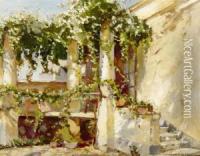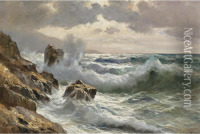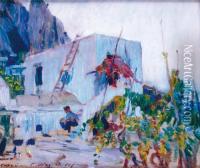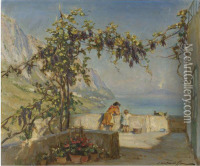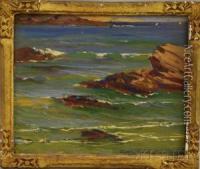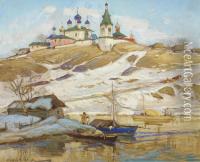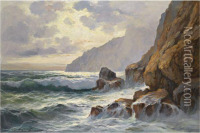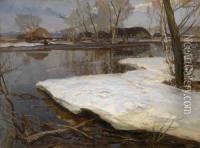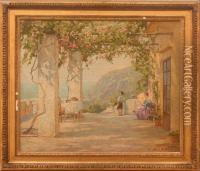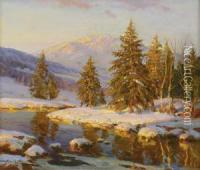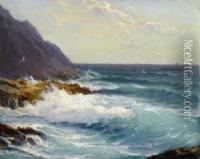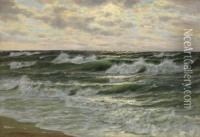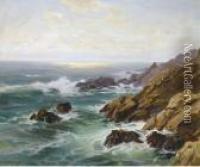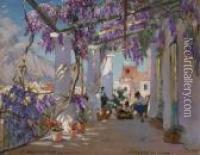Constantin Alexandr. Westchiloff Paintings
Constantin Alexandrovich Westchiloff, a distinguished Russian-American artist, was born on July 13, 1877, in St. Petersburg, Russia. He was recognized for his impressionistic style, which he developed after a rigorous training in the arts. Westchiloff initially studied at the Imperial Academy of Arts in St. Petersburg, where he honed his skills in the classical traditions of Russian fine art. His early work was marked by a strong adherence to academic standards, but as his career progressed, he began to integrate more light and color into his compositions, demonstrating the influence of Impressionism.
Westchiloff's life spanned a turbulent period in Russian history, including the fall of the Russian Empire and the rise of the Soviet Union. During the Russian Revolution, the situation for many artists became precarious, and in 1922, Westchiloff emigrated from the Soviet Union. He traveled through Europe, spending time in Italy and France where he was exposed to new artistic movements and continued to evolve his style.
Eventually, Westchiloff settled in the United States, where he became part of the vibrant art scene. He lived in New York City for a period and became associated with the American Impressionist movement. His works from this time often featured landscapes and cityscapes, capturing the play of light across various scenes with a vibrant palette and lively brushwork. Westchiloff's paintings were well received, and he participated in numerous exhibitions, both solo and group shows, which helped to establish his reputation in his adopted country.
Despite the success he found in the United States, Westchiloff remained relatively unknown in his homeland, as the Soviet regime promoted socialist realism and suppressed other art forms. As a result, Westchiloff's contributions to art were largely overlooked in Russia during his lifetime.
Constantin Alexandrovich Westchiloff passed away on September 21, 1945, in New York. Although he never returned to Russia, his artistic legacy continues to be appreciated by art historians and collectors worldwide. His works can be found in several museum collections and continue to be a testament to the cross-cultural exchange of artistic ideas between Russia and the West during the early 20th century.
